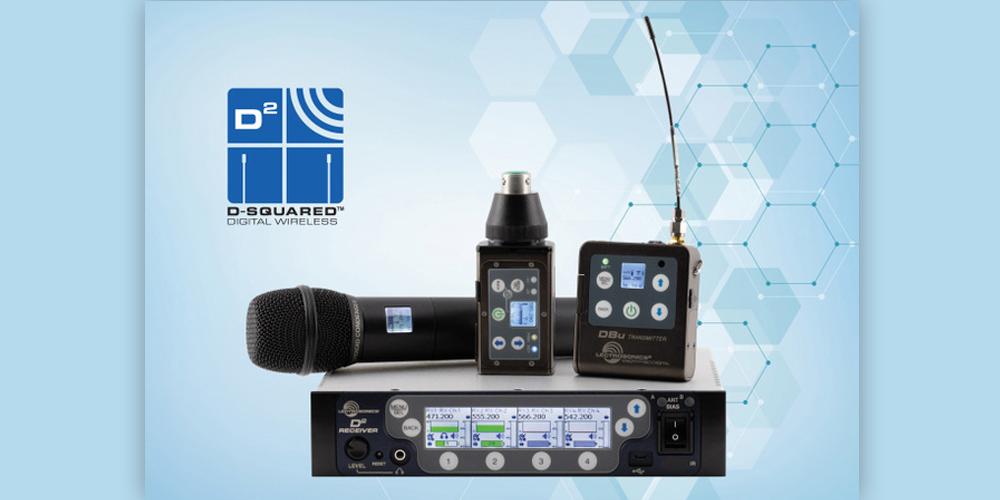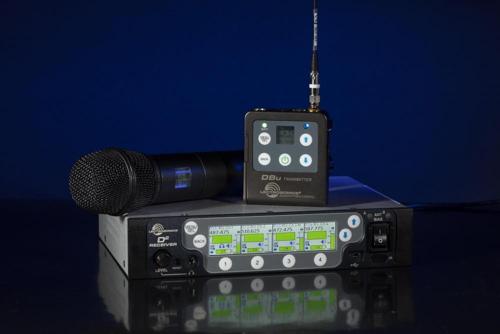Search the Community
Showing results for tags 'digital'.
-
Schoeps CMD-2U It's the digital version of the Schoeps Colette CMC amplifiers. Anybody use it? There's no specific section about it on the Schoeps website. However, in Coffey magazine they seem to indicate that it is more resistant to humidity. With all the talk of the SuperCMIT being resistant to humidity, I was wondering if anyone had any thoughts about this one. I've searched on the web but info's pretty slim.
-
Introducing the DPR digital plug-on transmitter, and the DSQD/AES 4-channel digital receiver: https://www.lectrosonics.com/lectrosonics-introduces-the-dpr-digital-plug-on-transmitter-and-the-dsqd-aes-3-receiver.html
-
On some kind of mythical, possibly Quixotic journey to get marked up sides onto the iPad. Solving: Easiest way to highlight the sides from .pdf script and export to iPad app cable of interfacing with Bluetooth page-turning hardware pedal (PageFlip Firefly $109/two AA batteries is the hardware I chose). ForScore is the first and only PageFlip-compatible app I've tried. Pretty good, but would prefer an app better suited for highlighting in many colors. This one requires I hand-build all the highlighter colors and is clunky when switching pages (you have to get out of highlighting mode first) and clunky to change colors. Moot if there's an app made specifically with highlighting with many colors in mind. Here are currently-listed compatible iPad apps: forScore, unrealBook, Deepdish GigBook, DrumSetlist Manager, Hymnals, iCue, iGigBook, iReal b, Loopy, Loopy HD, MuseScore Sheet Music Viewer, Music Binder, MusicReader, MusicPodium, My Lyric Book, NextPage, NextSong, OnSong, PiaScore HD, Play On Cue, Pocket Jamz Guitar Tabs, Pocket Jamz Piano Notes, PrompterPal, SampleWiz, Avid Scorch, Scorio Music Case, SeeScore, Finale SongBook, Sheet Music Direct, Scorecerer, Set List Maker, Setlists, Steinway Etude, TheGigEasy, Virtual Sheet Music, Teleprompt+, and Planning Center Online Here are the compatible Android apps: Android: MobileSheets, MusicNotes, SongBook, Fakebook, Lyrics Flipper+, Moon+ Reader, EBookDroid, Cool Reader, ezPDF Reader, and any other keyboard-compatible app. Tried GoodReader .pdf app for highlighting. As with most, it can import docs from Dropbox, email, etc., but again it's not so friendly when changing colors 'cause you have to 'save' the pink on the page before changing to green on the same page. One would benefit from doing all of the 'orange' for the whole script, then all the 'pink', then... A screenshot from GoodReader's highlight operation: Tried PDFPen, a paid Mac application I got to digitally sign .pdf's and works OK, and easier for me to deal with on the laptop (as opposed to iPad). Imagine there's a better application for that OS. Preview only offers a few highlighter colors but words very well otherwise. Here's a video exploration of the above-referenced tools: Typing out the issues helped; thanks Anybody successfully doing this yet?
-
Just in time for the NAB show! http://www.lectrosonics.com/US/Wireless-IFB/category/218-iem-in-ear-monitor.html -Karl
-
http://www.lectrosonics.com/US/lectrosonics-introduces-the-dba-digital-belt-pack-transmitter.html
-
Just out of curiosity, I was wondering if anyone out there uses, or have tried out, any digital microphones for field use? I'm talking about mics such as for instance the Neumann KM D-series. The thinking behind a digital mic seems good, but since they are not widely used, maybe they aren't up to the quality of the analogue ones yet? Or are there some other issue, like reliability or the dynamic performance of the AD section? Thank you for the vast amount of knowledge you all provide here!
- 20 replies
-
- digital
- microphones
-
(and 2 more)
Tagged with:
-
I was wondering if anyone is familiar with digital preamps and the various unique sonic elements that different brands offer. I 've tried a number of different analogue preamps in my life and can audition the differences of an SSL preamp and a more commercial Tascam preamp as well as the transparency of a Sonosax one but I am not much experienced on digital preamps. Has anyone compared the digital preamp offerings from Schoeps, Lake People and Audio root ? I am particularly interested on compact preamp offerings rather than 1 U units. Is anyone aware of the current draw required for Digital Phantom Powering and whether DPP restricts on board batteries on compact units ( i.e. DPP needs an external power source ). Since A/D is always taking place in the mic with digital mics, do digital preamps play as an important role as analogue ones ? Best
-
Hi everyone, If anyone is in the north west area of the UK, we have just received delivery of the new Audio Ltd 1010 digital systems. You are more than welcome to drop by the office to have a look. Let me know if you have any questions. Thanks, Nathan.
-
Here's a "walk" test using Gordon's Mini with the DB transmitter on the roof with a right angle whip. For some reason the sales department had one right angle whip on the DRM receiver module with an LPDA on the other antenna port. So this literally was a diversity system with 1.5 LPDA's or 2.5 whip antennas attached. Also, they used a transmitter frequency that had a high noise floor from local TV stations. So in one sense this was just the sales crew goofing around. The fact that there was an ex-engineer there, lends no credibility to the test. http://youtu.be/lFTqL8dUD9U Best, Larry F Lectro
-
I found this article originally published in 2007. I do not necessarily agree with everything the author is saying but it is definitely food for thought. New York Times: Media & Advertising The Afterlife Is Expensive for Digital Movies By MICHAEL CIEPLY Published: December 23, 2007 (LOS ANGELES) Time was, a movie studio could pack up a picture and all of its assorted bloopers, alternate takes and other odds and ends as soon as the production staff was done with them, and ship them off to the salt mine. Literally. Having figured out that really big money comes from reselling old films — on broadcast television, then cable, videocassettes, DVDs, and so on — companies like Warner Bros. and Paramount Pictures for decades have been tucking their 35-millimeter film masters and associated source material into archives, some of which are housed in a Kansas salt mine, or in limestone mines in Kansas and Pennsylvania. A picture could sit for many, many years, cool and comfortable, until some enterprising executive decided that the time was ripe for, say, a Wallace Beery special collection timed to a 25th- anniversary 3-D rerelease of “Barton Fink,” with a hitherto unseen, behind-the-scenes peek at the Coen brothers trying to explain a Hollywood in-joke to John Turturro. It was a file-and-forget system that didn’t cost much, and made up for the self-destructive sins of an industry that discarded its earliest works or allowed films on old flammable stock to degrade. (Indeed, only half of the feature films shot before 1950 survive.) But then came digital. And suddenly the film industry is wrestling again with the possibility that its most precious assets, the pictures, aren’t as durable as they used to be. The problem became public, but just barely, last month, when the science and technology council of the Academy of Motion Picture Arts and Sciences released the results of a yearlong study of digital archiving in the movie business. Titled “The Digital Dilemma,” the council’s report surfaced just as Hollywood’s writers began their walkout. Busy walking, or dodging, the picket lines, industry types largely missed the report’s startling bottom line: To store a digital master record of a movie costs about $12,514 a year, versus the $1,059 it costs to keep a conventional film master. Much worse, to keep the enormous swarm of data produced when a picture is “born digital” — that is, produced using all-electronic processes, rather than relying wholly or partially on film — pushes the cost of preservation to $208,569 a year, vastly higher than the $486 it costs to toss the equivalent camera negatives, audio recordings, on-set photographs and annotated scripts of an all-film production into the cold-storage vault. All of this may seem counterintuitive. After all, digital magic is supposed to make information of all kinds more available, not less. But ubiquity, it turns out, is not the same as permanence. In a telephone interview earlier this month, Milton Shefter, a longtime film preservationist who helped prepare the academy’s report, said the problems associated with digital movie storage, if not addressed, could point the industry “back to the early days, when they showed a picture for a week or two, and it was thrown away.” Mr. Shefter and his associates do not contend that films are actually on the verge of becoming quite that ephemeral. But they do see difficulties and trends that could point many movies or the source material associated with them toward “digital extinction” over a relatively short span of years, unless something changes. At present, a copy of virtually all studio movies — even those like “Click” or “Miami Vice” that are shot using digital processes — is being stored in film format, protecting the finished product for 100 years or more. For film aficionados, the current practice is already less than perfect. Regardless of how they are shot, most pictures are edited digitally, and then a digital master is transferred to film, which can result in an image of lower quality than a pure film process — and this is what becomes stored for the ages. But over the next couple of decades, archivists reason, the conversion of theaters to digital projection will sharply reduce the overall demand for film, eventually making it a sunset market for the main manufacturers, Kodak, Fujifilm and Agfa. At that point, pure digital storage will become the norm, bringing with it a whole set of problems that never troubled film. To begin with, the hardware and storage media — magnetic tapes, disks, whatever — on which a film is encoded are much less enduring than good old film. If not operated occasionally, a hard drive will freeze up in as little as two years. Similarly, DVDs tend to degrade: according to the report, only half of a collection of disks can be expected to last for 15 years, not a reassuring prospect to those who think about centuries. Digital audiotape, it was discovered, tends to hit a“brick wall” when it degrades. While conventional tape becomes scratchy, the digital variety becomes unreadable. Difficulties of that sort are compounded by constant change in technology. As one generation of digital magic replaces the next, archived materials must be repeatedly “migrated” to the new format, or risk becoming unreadable. Thus, NASA scientists found in 1999 that they were unable to read digital data saved from a Viking space probe in 1975; the format had long been obsolete. All of that makes digital archiving a dynamic rather than static process, and one that costs far more than studios have been accustomed to paying in the past — no small matter, given that movie companies rely on their libraries for about one-third of their $36 billion in annual revenue, according to a recent assessment by the research service Global Media Intelligence. “It’s been in the air since we started talking about doing things digitally,” Chris Cookson, president of Warner’s technical operations and chief technology officer, said of the archiving quandary. One of the most perplexing realities of a digital production like “Superman Returns” is that it sometimes generates more storable material than conventional film, creating new questions about what to save. Such pile-ups can occur, for instance, when a director or cinematographer who no longer has to husband film stock simply allows cameras to remain running for long stretches while working out scenes. Much of the resulting data may be no more worth saving that the misspellings and awkward phrases deleted from a newspaper reporter’s word-processing screen. Then again, a telling exchange between star and filmmaker might yield gold as a “special feature” on some future home-viewing format — so who wants to be responsible for tossing it into the digital dustbin? For now, studios are saving as much of this digital ephemera as possible, storing it on tapes or drives in vaults not unlike those that house traditional film. But how much of that material will be migrated when technology shifts in 7 or 10 years is anyone’s guess. (And archiving practices in the independent film world run the gamut, from studied preservation to complete inattention, noted Andrew Maltz, director of the academy’s science and technology council.) According to Mr. Shefter, a universal standard for storage technology would go far toward reducing a problem that would otherwise grow every time the geniuses who create digital hardware come up with something a little better than their last bit of wizardry. As the report put it, “If we allow technological obsolescence to repeat itself, we are tied either to continuously increasing costs — or worse — the failure to save important assets.” In other words, we could be watching Wallace Beery long after more contemporary images are gone.








